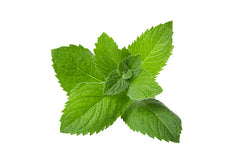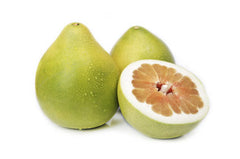What Does Sage Smell Like?
Click For Affordable Inspired Perfume Alternatives

Embark on a aromatic journey to the herb gardens and discover the enchanting aroma of sage. A perennial herb native to the Mediterranean region, sage boasts a distinctive fragrance that captures the essence of earthy tranquility. Join us as we explore the question: What does sage smell like?
What Does Sage Smell Like?
The fragrance of sage is a harmonious blend of earthy, herbaceous, and slightly minty notes. Imagine the grounding scent of fresh greenery with a touch of camphor and a hint of warmth. Sage's aroma is a celebration of the herb family, offering a calming and soothing olfactory experience.
Sage's Earthy Elegance
Enter the world of sage, where the fragrance is an elegant symphony of earthy tones. Join me on a fragrant journey to discover the captivating aroma that defines the essence of sage.
Herbaceous Symphony: A Garden Stroll
As you approach sage, the first olfactory impression is a gentle breeze of herbaceous symphony, reminiscent of a leisurely stroll through a bountiful herb garden. Picture the freshness of crushed green leaves and the aromatic essence of a thriving herb bed. Sage's fragrance is a celebration of herbal elegance, instantly transporting you to a serene garden with its calming and grounding character.
Minty Infusion: A Subtle Refreshment
The scent of sage is an infusion of subtle mintiness. It captures the herbal and slightly cooling essence, akin to a gentle breeze carrying the aroma of mint leaves. The fragrance is a testament to the minty undertones of sage, creating a refreshing and invigorating olfactory experience that echoes the tranquility of natural landscapes.
Warm Embrace: Cozy Herbal Comfort
While predominantly herbaceous, there's a subtle undercurrent of warmth in sage's scent. This comforting herbal warmth adds depth to the fragrance, creating a well-balanced composition that is both grounding and subtly cozy. Sage's aroma is a delightful interplay of earthiness and warmth, reminiscent of a cozy herbal embrace.
Camphor Kiss: Essence of Herbal Tranquility
Delve deeper into the scent, and you may notice a subtle camphoraceous quality that characterizes sage's fragrance. It's as if the aroma carries the essence of herbal tranquility, creating a calming and soothing olfactory experience.
Sage's Herbal Symphony
Hence, sage's fragrance is an herbal symphony of elegance, refreshment, warm embrace, and tranquil camphor. It stands as a testament to the calming and grounding qualities of this perennial herb, offering a sensory experience that is both soothing and delightful. Sage, with its comforting and complex aroma, invites us to savor the herbal notes found within its leaves, a fragrant journey that unfolds with every aromatic breath.
Factors Influencing the Scent of Sage Fragrance Oil
Sage fragrance oil is a carefully crafted composition designed to capture the earthy and herbaceous aroma of the Salvia officinalis plant, commonly known as sage. The formulation of this fragrance involves a thoughtful combination of aromatic compounds. Here are several factors that contribute to the grounding and herbaceous scent of Sage fragrance oil:
Fragrance Composition: Sage fragrance oil is a meticulously blended mixture of various aromatic compounds, chosen to replicate the characteristic scent of sage. This composition may include both synthetic and natural ingredients to achieve the desired olfactory profile.
Herbal Essence: At the heart of the fragrance lies the essence of sage. Notes of earthy herbs, with a perfect balance of mintiness and warmth, are intricately blended to mirror the calming and grounding aroma of sage.
Synthetic vs. Natural Components: Sage fragrance oil often combines both synthetic and natural ingredients. Perfumers make choices to strike a balance between authenticity, cost considerations, and sustainability in the selection of these components.
Extraction Method: The method used to create Sage fragrance oil, whether through distillation or extraction, plays a crucial role in defining the aromatic profile. Specific extraction methods contribute to the faithful recreation of the fresh and herbaceous scent.
Additional Herbal and Earthy Notes in the Blend: The fragrance may incorporate additional herbal elements or subtle earthy notes to enhance complexity. These complementary notes contribute to the overall grounding and soothing nature of the scent, capturing the essence of sage.
Quality of Ingredients: The quality of raw materials, including the source of essential components, directly influences the freshness and authenticity of the sage scent in the fragrance oil.
Perfumer's Artistry: The expertise and creativity of the perfumer or fragrance creator are crucial. Perfumers leverage their skills to balance different components, creating a distinctive and delightful sage fragrance.
Regulatory Compliance: Adherence to regulatory standards and restrictions on certain fragrance ingredients is crucial. Compliance with safety guidelines requires careful consideration of ingredient choices to ensure the fragrance is safe for use.
Usage in Products: Sage fragrance oil can be incorporated into various products, including perfumes, candles, room sprays, and bath products. The interaction with other ingredients in specific product formulations can influence how the sage scent is perceived.
Product Type and Concentration: The concentration of Sage fragrance oil in a product affects the strength and longevity of the scent. Higher concentrations may be suitable for perfumes, while lower concentrations work well for candles, soaps, or room sprays.
Storage Conditions: Proper storage conditions for Sage fragrance oil, both before and after formulation, are essential to maintain its stability and scent. Storing it in a cool, dark environment helps preserve the freshness of the fragrance.
Consumer Preferences and Trends: Formulations of Sage fragrance may adapt to changing consumer preferences and market trends. The popularity of herbal scents or unique blends may influence product formulations.
Artisanal vs. Commercial Production: Differences between artisanal and commercial production of Sage fragrance oil may impact ingredient sourcing, formulation, and overall quality. Artisanal methods may emphasize craftsmanship and unique blends.
Post-Formulation Processing: Additional processes, such as aging or filtering after the formulation of the fragrance oil, may influence the final scent and contribute to the desired characteristics.
Exploring different formulations of Sage fragrance oil allows consumers to experience a range of earthy and herbaceous scents reminiscent of the calming sage herb. Individual preferences play a significant role in selecting the perfect Sage fragrance for various applications.
What to Look for When Choosing Sage Fragrance Oil
Selecting a sage fragrance oil allows you to enjoy the grounding and herbaceous aroma of sage, a versatile herb. Whether used in candles, diffusers, or personal care products, consider these factors to ensure you choose a high-quality and authentic sage fragrance oil:
Herbal Authenticity: Seek a sage fragrance oil that authentically captures the fresh, earthy, and slightly minty scent of real sage. Look for a fragrance that embodies the unique herbal notes characteristic of quality sage.
Natural vs. Synthetic: Determine whether the fragrance oil is derived from natural sources or is synthetically produced. Natural sage oils can provide a more nuanced and realistic scent, closely resembling the aroma of actual sage.
Blend Ingredients: Check the blend of ingredients in the fragrance oil. A well-crafted combination of natural and synthetic components can contribute to a balanced and long-lasting sage fragrance.
Intensity Level: Consider the intensity level of the sage fragrance. Some may prefer a subtle and grounding scent, while others may desire a more pronounced and soothing aroma. Look for a fragrance that aligns with your desired level of intensity.
Versatility: Choose a fragrance oil that is versatile and suitable for various applications. Whether used in candles, soaps, lotions, or diffusers, versatility allows you to enjoy the herbal scent in different settings.
Packaging: Assess the packaging of the fragrance oil. Opt for a bottle that is dark or opaque to protect the oil from light exposure, preserving its freshness and preventing deterioration over time.
No Residue or Discoloration: Ensure that the sage fragrance oil leaves no residue or discoloration when incorporated into different products. A high-quality oil should seamlessly integrate into various mediums without causing unwanted effects.
Manufacturer Reputation: Research the reputation of the manufacturer or brand. Choose well-established brands with positive reviews, as they are more likely to produce reliable and high-quality fragrance oils.
Testing Options: Look for fragrance oils that offer testing options or sample sizes. This allows you to experience the scent firsthand before committing to a larger quantity, ensuring it aligns with your preferences.
Ethical and Sustainable Practices: Consider the manufacturer's commitment to ethical and sustainable practices. Brands that prioritize responsible sourcing and environmentally friendly production contribute to a more conscientious choice.
By considering these factors, you'll be better equipped to choose a sage fragrance oil that not only aligns with your preferences but also ensures a high-quality and calming olfactory experience in your chosen applications.
Where to Find Reputable Sage Fragrance Oils
Specialty Candle and Soap Supply Stores: Explore specialty stores dedicated to candle-making and soap supplies, as they often carry a variety of fragrance oils, including unique scents like sage. These stores may offer options suitable for crafting candles, soaps, and other scented products.
Online Fragrance Oil Retailers: Browse reputable online platforms specializing in fragrance oils. Websites and retailers dedicated to aromatherapy, candle making, or DIY crafting may have an extensive selection of sage fragrance oils. Check product descriptions and customer reviews for authenticity and quality.
Artisanal or Handmade Markets: Attend artisanal markets or craft fairs where independent sellers showcase handmade products. Artisan vendors may create unique and carefully crafted sage fragrance oils, providing an opportunity to explore distinct options.
Local Essential Oil or Perfume Shops: Specialty shops focusing on essential oils or perfumes may carry sage fragrance oils. These stores often prioritize high-quality scents and may offer a range of unique and herbal aromas.
Online Marketplaces: Platforms like Etsy or other online marketplaces featuring handmade or artisanal products can be sources for sage fragrance oils. Look for sellers with positive reviews and detailed information about their products.
Aromatherapy Stores: Aromatherapy stores often carry a variety of fragrance oils for different applications. Inquire about the availability of sage scents to add a grounding and herbal aroma to your living space.
Local Farmers' Markets or Herbal Shops: Check with local farmers' markets or herbal shops that specialize in natural products. Some of these establishments may offer fragrance oils with botanical scents, including sage.
Specialty Perfume Retailers: Explore specialty perfume shops that focus on unique and exotic fragrances. These stores may carry sage fragrance oils known for their distinctive and calming herbal notes.
Word of Mouth: Seek recommendations from friends, family, or members of fragrance communities for trusted sources of sage fragrance oils. Personal experiences and suggestions can guide you to reputable suppliers known for quality and authenticity.
Check Ingredients and Descriptions: Before making a purchase, carefully read product descriptions and check ingredient lists for sage fragrance oils. Authentic and reputable sellers provide clear information about the composition and intended use of their products.
Note: Sage fragrance oils can bring a grounding and herbal note to your DIY projects. Ensure that the fragrance oil you choose aligns with your intended use, whether it's for candles, soaps, diffusers, or other creative endeavors. Follow safety guidelines provided by the manufacturer for proper usage.
20 Questions and Answers about Sage:
-
What is sage in perfumery?
- Sage is a fragrant herb commonly used in perfumery for its aromatic properties.
-
What is the botanical name for sage used in perfumery?
- Salvia officinalis is the botanical name for the sage commonly used in perfumery.
-
How is sage essential oil extracted?
- Sage essential oil is typically extracted through steam distillation of the leaves of the sage plant.
-
What is the aroma profile of sage in perfumery?
- Sage has a warm, herbaceous, and slightly camphoraceous aroma, often described as earthy and fresh.
-
Is sage used more in men's or women's perfumes?
- Sage is versatile and can be found in both men's and women's perfumes. Its earthy tones make it suitable for various fragrance compositions.
-
Which perfume families commonly include sage notes?
- Sage is often found in aromatic or herbal fragrance families, but it can also be used in woody, green, or fougère compositions.
-
Does sage blend well with other fragrance notes?
- Yes, sage blends well with citrus notes, florals, woody notes, and other herbs. It adds complexity and depth to many fragrance blends.
-
Are there different varieties of sage used in perfumery?
- While Salvia officinalis is the most common sage used, there are other varieties, such as Clary sage (Salvia sclarea), that are also used in perfumery.
-
Is sage used more as a top, middle, or base note in perfumery?
- Sage can be used in various notes depending on the composition, but it is often used as a middle note due to its balanced aromatic profile.
-
Does sage have any therapeutic benefits in perfumery?
- Sage is believed to have certain therapeutic benefits, including promoting relaxation and mental clarity, which can contribute to the overall experience of a fragrance.
-
Can sage be overpowering in a fragrance?
- While sage has a distinctive aroma, it can be used in moderation to avoid overpowering a fragrance. Its strength is often balanced with other complementary notes.
-
Is sage commonly used in natural or synthetic form in perfumery?
- Both natural sage essential oil and synthetic sage components are used in perfumery, depending on the desired fragrance profile and cost considerations.
-
Are there cultural or historical significances associated with sage in perfumery?
- Sage has a long history of use in various cultures for its medicinal and aromatic properties, and it has been used in perfumery for centuries.
-
Does sage have any symbolic meanings in perfumery?
- Sage is often associated with wisdom and purification, and these symbolic meanings may be considered when incorporating sage into a fragrance.
-
Can sage be used as a dominant note in a fragrance composition?
- Yes, sage can be used as a dominant note, especially in fragrances that aim to showcase its unique herbal and earthy characteristics.
-
Does sage fragrance have seasonal associations?
- Sage is versatile and can be used in fragrances for various seasons. Its freshness may make it suitable for spring and summer, while its warmth can contribute to fall and winter scents.
-
Are there any precautions or considerations when using sage in perfumery?
- Some people may be sensitive to certain components in sage oil, so it's essential to consider potential allergens and skin sensitivities when formulating fragrances.
-
Can sage be used in combination with culinary-inspired notes in perfumery?
- Yes, sage can be paired with culinary-inspired notes such as spices, herbs, and citrus to create unique and intriguing fragrance compositions.
-
Are there any famous perfumes that prominently feature sage?
- Perfumes such as Dior's Fahrenheit and Jo Malone's Wood Sage & Sea Salt are known for incorporating sage into their formulations.
-
Can sage be used in niche or artisanal perfumery?
- Absolutely, sage's unique and complex aroma makes it a popular choice in niche and artisanal perfumery, where perfumers often experiment with unconventional and distinctive notes.
Buy Perfumes - Best Online Retailers
Click For Affordable Inspired Perfume Alternatives
Click For The Best Niche Perfumes & Decants
Pheromone Perfumes - Confidence, Attraction & Appeal - Click For More
Home Fragrances & Candle Warmers - Click To Scent Up Your Spaces Today!



